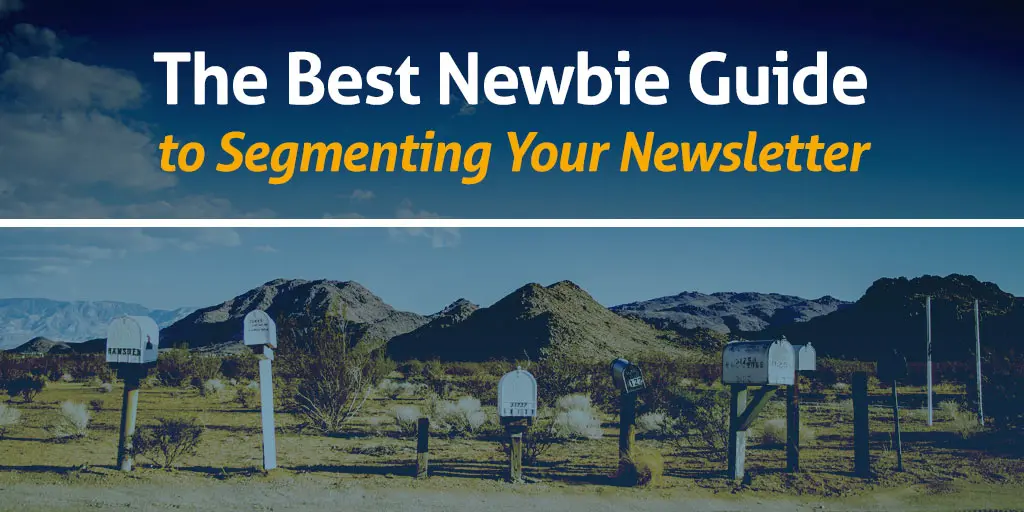
Ah, segmenting. Good ‘ole segmenting. It sounds about as much fun as a root canal without the painkillers, am I right?
You’ve probably read before that you need to segment your email list, but it seemed like way too much to do. It’s one of those tactics that big corporations employ, and you really don’t have to worry about it because your email list is still small (but growing). Who has time to dissect an email list into smaller groups anyway?
You do, and here’s why:
According to our buddies at MailChimp, segmented emails get 14.28% more opens than emails sent willy nilly and, get this: segmented emails also get 57.69% more clicks. Those numbers are huge in terms of email engagement.
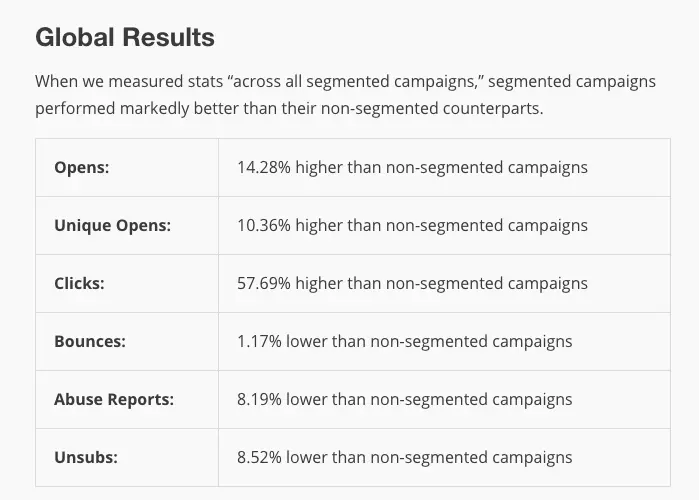
Segmenting is not just for big business, it’s for solopreneurs, start ups, and small businesses of every size that communicate with their customers via email.
The number one reason you should segment is:
Not everyone on your list is the same. Just like special snowflakes, every single subscriber is different. It doesn’t matter if you have ten people on your list or ten thousand. Each one of those subscribers has different needs, pain points, and reasons to be on your mailing list.
For example, an average list includes people who:
Now, imagine sending one blanket email to everyone on your list.

Because I’m rooting for you, here’s some tough love:
People unsubscribe and delete your emails without opening because you’re not talking to them. You’re not adding value to their interaction with your brand. You’re not addressing their pain points.
People unsubscribe and delete your emails without opening because you’re not talking to them. Click To Tweet
But don’t despair – you can segment your way out of this. In this post, I’m going to guide you through segmenting your newsletter, and it won’t be anywhere near as painful as a root canal. I promise.
How to set up your segments
It all begins with understanding who is signing up for your email subscription and why. As we discussed earlier, there’s probably more than one reason people subscribe to your list. Your mission is to figure out each one.
That’s right, get a notebook and map out every reason why you think a person may subscribe to your email list. Here’s a starter list:
Write down every possible reason. This will help you understand how to segment your existing list.
Pinpoint what you need to know most
Figure out what information you’re already collecting now (such as location), and what information you need to collect to create more targeted emails. Perhaps you’d like to start targeting readers based on gender or purchasing behavior.
Decide which ways you’d like to connect with your subscribers, and then create a pathway for them.
How to make a pathway
Here are my favorite pathways to segments:
+Create opt-ins galore
On your sidebar, on your header, in your footer, throughout your content– nestle in little opt-ins (that are relevant and targeted to the content). But don’t leave it there. Use those opt-ins to peek into possible motivations.
For example, a user who downloads your email on pet photography should be on a separate track than those who subscribe to your blog on all things photography.
+Create multiple landing pages
Similar to opt-ins, you should also create specific landing page for each group you’re focused on. We delve deeper into landing page optimization here and here. Check those two pages out.
+Use easy quizzes (and lots of them)
Everyone likes quizzes. Use a quiz to engage your readers and find out about their expectations.
My favorite quiz of all time is from Derek Halpin of Social Triggers. He created the genius quiz, What type of entrepreneur are you?
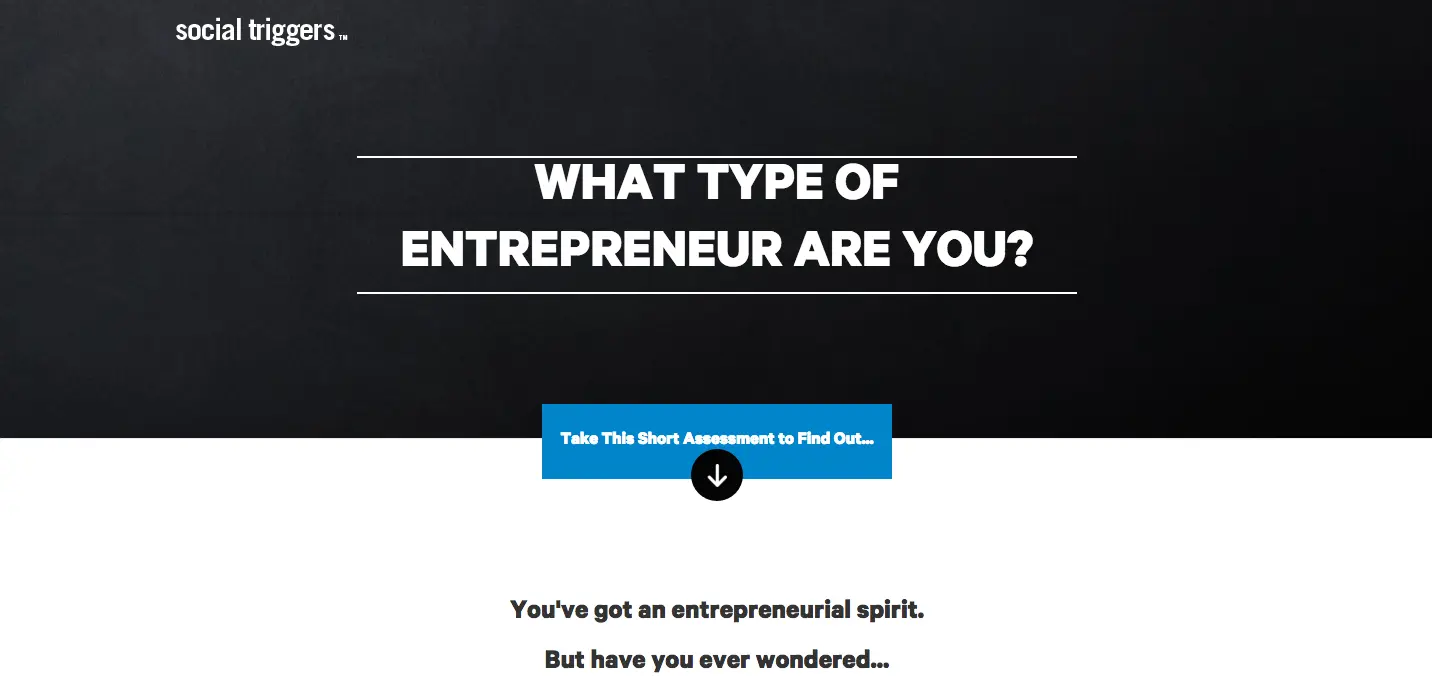
Image courtesy of Social Triggers
Why is this genius?
The quiz is fun to take (genius #1) but it also helps the team at Social Triggers segment users into specific categories (genius #2). In order to discover your entrepreneur type, you must submit your email and sign up for their email list (so much genius). Immediately, you are placed on a specific segment so that Social Triggers can use relevant language to reach you.
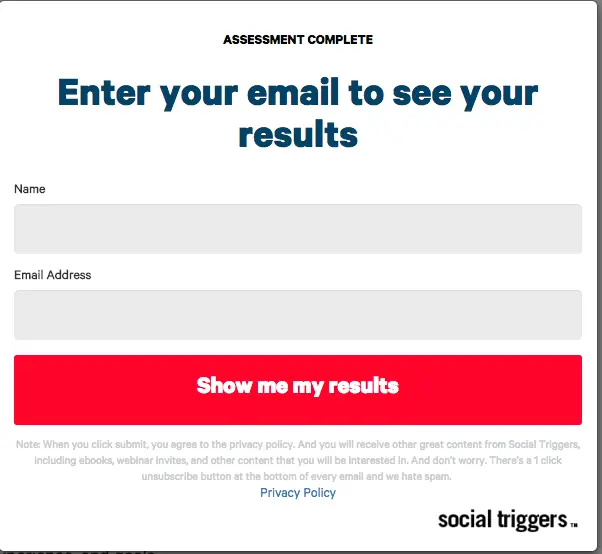
(Disclaimer: they didn’t share their marketing plan with me, but that’s what I’d do if I was on the Social Triggers marketing team.)
7 Easy Ways to Segment
Now that you know how to set up your pathway, here are my favorite, no-brainer ways to segment:
1. Member rating
Your email subscription service probably has a way to rate your subscribers based on behavior. This is the easiest way to get started on segmentation. For example, MailChimp does a star rating system based on user engagement levels.
You can use this list to determine who’s most active on your list and reward them with exclusive content.
2. Demographics
Segment your emails based on key demographics, such as age, sex, and location (A/S/L for short) like in the good ‘ole days of Internet chat:
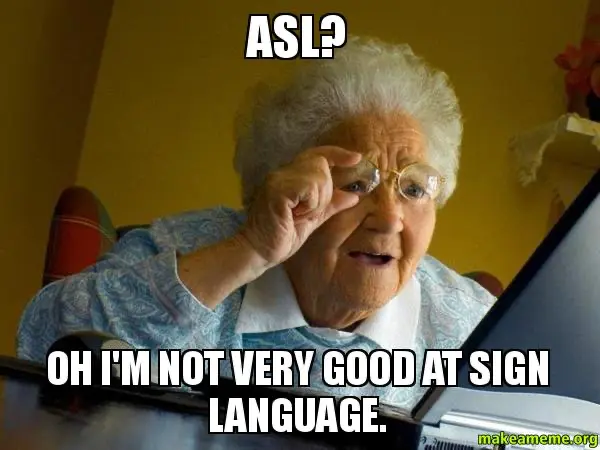
Let’s break down each demographic.
By age
Someone in the 20s will react to an email differently than someone in their 60s. If you appeal to a wider demographic, make sure that you segment so that you’re speaking their language.
By sex, or gender
Men are from Mars… yeah, let’s just say men and women think differently, and may have different motivations for joining your list. If you sell apparel, for example, you’ll want to segment your list so that you’re sending the emails to the most relevant buyer.
By location
Your business is global, but you don’t want to send out one email to everyone from Hong Kong to Nashville at the same time. What if you’re hosting an impromptu live webinar? You’ll want to target only the people within a specific set of time zones, and not those who are probably sleeping.
3. Purchasing behavior
This is one of the best and juiciest segments to include in your email marketing. Are you welcoming a new customer, maintaining an old faithful customer, or re-engaging a customer who’s fallen away? You can’t say the same thing to all three personas.
Let’s take a look at how to market to each.
A new customer
You’ve reeled him in, now reinforce his positive feelings about your brand. Explain how frequently you’ll email and what topics to expect. Highlight a superstar customer testimonial to reassure your new customer that he made the right choice with your brand.
Also, accompany a purchase review email with new recommendations of what to buy. Customers are more likely to be upsold immediately after making a purchase.
An old faithful customer
These are customers you can depend on. They’re always there for your campaigns and purchase from you frequently. Customer retention is a smarter strategy than customer acquisition because it takes less money to keep a customer than to get a new one.
To this customer, send out new products and promotions. Instead of offering discounts for the sake of it, use a discount as a referral incentive. These customers should be mobilized into your influencer segment, and sent emails that nudge them to share and promote your business.
A fallen customer
Do you have a customer who purchased from you in the past but then went silent? It’s still possible to re-engage them.
Offer a special one-time discount on a product that they’ve purchased from you in the past.
4. Survey says…
You are doing surveys on your email list, right? If not, now’s the perfect time to start. Ask questions that help you understand your subscribers’ pain points and what they’re hoping to get from their interactions with your brand.
To guarantee more activity on your survey, offer something in exchange. For example, by participating in a survey, the user is automatically entered to win a free prize that makes sense for your brand.
5. Shopping Cart Abandonment
A whopping 67% of buyers abandon their carts, but! 75% of them will return and complete the purchase if you ask them to. That’s where email comes in handy.
If a customer hasn’t made the purchase, don’t wait too long to engage them. Send them an email immediately (or within 60 minutes). After an hour, 90% of leads go cold.
There’s a lot of reasons why a customer abandons the cart. Check out these statistics from Statista:

Image Courtesy of Econsultancy
As you can see, the top reasons are unexpected costs (read: shipping & handling), just browsing, or found a better price somewhere else.
Well, you can remedy that.
In your re-engagement email, offer free shipping or a discount that compensates accordingly (20% for example). Discounts often move the needle in your favor.
6. Initiated a Trial
Woohoo! You’ve got a new trial user. Keep them engaged with a series of emails on how to use your product. You can also send an email with common questions and answers about the product.
While it’s best not to smother your new trial user with too many emails, they do expect to hear from you, and they’ll never be more engaged than they are immediately after beginning a trial with you.
How many emails? There’s not a one-size-fits-all answer here, but I highly recommend starting with at least three within the trial period:
Thanks for joining/ downloading/ signing up. This is a genuine thank you letter, but it also sets up what the subscriber should expect from you (i.e. email frequency and what’s coming next).
How to use the product/service. Here’s where you explain how the product works and key features to consider. You should highlight your customer support email/page and emphasize that you’re accessible.
Hard sell. When the trial is coming to an end (but not over quite yet), here’s the time to sell your upgrade. Give reasons to upgrade, feature power users, and explain why they shouldn’t quit.

You won’t quit, I won’t let you!
7. Failed to convert after the trial ended
Wonk, wonk, wonk. Sometimes a user just doesn’t upgrade after a trial ends. Always assume they want to, or else they wouldn’t have opted in for your free trial in the first place. You can use this segment to convince your user to give you another glance. Go for a hard sell with a special discount promo code or even extend the free trial. You can also go for the soft sell by sending an email with testimonials or case studies to gently persuade them.
How to actually segment in your email subscription service
Around here, we’re partial to MailChimp. It’s so darn easy to use (and it’s free for those with less than 2000 subscribers and 12,000 monthly emails). Check out their step-by-step instructions to setting up segments here.
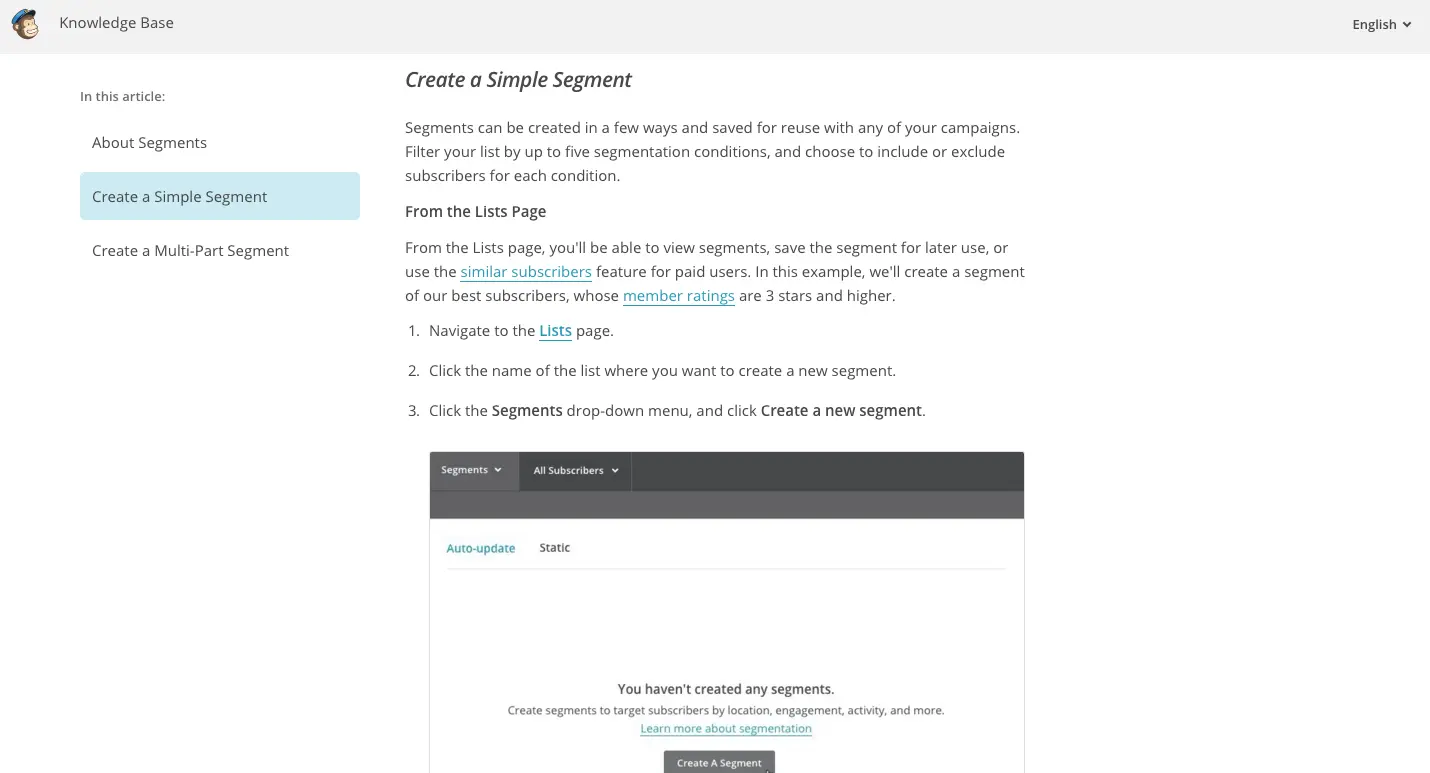
Final Thoughts
At first blush, segmenting sounds painfully difficult and unattainable for a smaller brand. I hope these tips have helped you realize just how easy it is to optimize email marketing for everyone on your list. Bookmark, print out, and share this guide with your friends and followers on social media. And don’t forget to subscribe for even more ways to segment your email list.